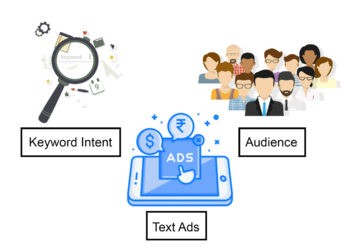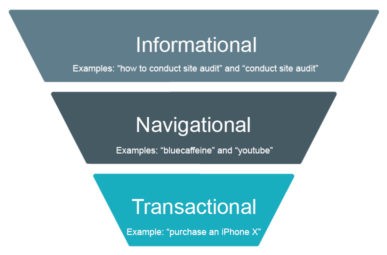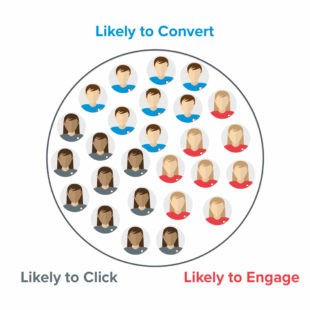Death of Keywords and Rise of Search Intent?
Death of Keywords and Rise of Search Intent?
Okay, okay! You might really be thinking “What! Is keyword research really dead?” The answer is no for sure because keyword research is the most important and sophisticated part of digital marketing which is used to know the behavior of internet users and most searchers. Google had introduced keyword as the search methodology, which is also helpful in knowing the answer for the many typical questions like:
Are my keywords targeting what people are actually looking for?
Will searchers who find my site using these keywords find answers to their questions?
So, the keyword research never dies, but the older methodology of building a list of keywords is not effective anymore – users don’t type simple keywords that yield relevant Google results, rather the users are entering “queries” – phrases that match specific search intent and their context.
From Search Marketing Point of view, 3 factors are used to understand the context that leads to clicks or conversions.
- Keyword Intent
- Audience
- Ads

1. Keyword Intent:
Let us analyze what is keyword intent/search intent and its influence on clicks. Basically, Google attempts to match the intent based on 4 categories
Search Data
Click Data
Heuristics
Relevance
Based on this, the outcome of the results is highly relevant to the intent of the user. Let’s see how the intent plays an important role.
Role of Search Intent:
Every user’s main aim is to get “instant results” about people, places and things and Google can decipher the intent through the past data, and that’s when intent helps.
Google provides highly relevant search results using a few categorical tactics. Here’s how it works:
To get local results —“nearby” results.
The “Google Autocomplete” to complete queries and phrases.
The “Google spelling correction” to correct the spellings.
Dictionary results for “definition-based” queries.
User Search Intent:
With latest algorithm updates like semantic search, users easily get the right answers/solutions to what they are looking for through their search results. So, now the question is – Does the brand fit in?
Nowadays, it is important that brands set up their online presence according to the customer intent(s) and not stick to keywords focused optimization. This can be done by concentrating on a few tactics like:
Mapping queries to actions
Intent research
Aligned content creation
Well, now that you sort of understood how intent is taking over keywords, let’s leap over to find out how keyword intent plays a role in conversion.
How does keyword intent play a role in conversion?
Google Algorithms keep changing but the way a person thinks doesn’t change that often. Marketers and search engines have one common and important goal, that is providing searchers with the results that are matching their intent. Therefore, it is important to understand who your audience is and what their behavior is like. Once you know the target audience and how they search for your service or product, it is easy to effectively reach those users. Usually, many marketers tend to use keywords that even their competitor target and stuff all the keywords in the title tags, and meta descriptions. This was SEO a decade ago. Now it will hurt your ranks
So, you might ask apart from all this, what do I gain out of keyword intent?
Keyword intent to marketing funnel mapping
Like we discussed above, now with the downfall of keyword research, and with thousands of people searching for plenty of things over the internet every day, it is important to optimize your copy according to the intent of the users. But to make the process of coming up with a relevant copy that is easy and catchy, it is safe to say that using a funnel mapping can make your task all the easier.
People use search engines for three reasons:
To obtain information
To educate themselves
To perform a transaction.
These intentions give rise to informational, navigational, or transactional searches respectively. Any type of query can be identified by the keywords the user employs and by the format adopted for search-engine input.
The following funnel approach helps you filter out the unnecessary topics that don’t help in fetching any traffic.
Informational intent
Navigational intent
Transactional intent

Informational: As the name suggests this is where the user gets introduced to the information. The information in this funnel is more conversational and interactive. This step doesn’t directly promote sales to a user, but it helps in building the trust. Hence, it is important to build a sense of authenticity and trust- for example, the user can search “How to conduct a site audit” or simply “conduct site audit”.
Navigational: This is where a user searches for a specific term to find a specific website – for example, “bluecaffeine” or “youtube”. Here, the user has a partially clear intent of what to look for and is not seeking a particular product or a brand, he/she just simple wishes to visit a particular website and uses the search engine to navigate hence the name “navigational search query”.
Transactional: this kind of request indicates that the user wishes to execute a transaction– for example, “buy women purses” or “purchase an iPhone X”. This helps in selecting the product and visiting a relevant website to directly purchase a product. In this section of the funnel, the user has a clear intent on what to buy. Transactional intent keywords have a very high value to offer. This is where a user interacts with the product and key opportunity for marketers to deliver customer delight. One of the main aspects of Transaction intent based keywords is purchase or commerce. Keywords that have a clear Commercial Intent are of high value, and usually in pay per click terms are also the most expensive.
Now that we viewed all the 3 categories of the funnel, it is important to remember that the top priority is the conversion-oriented content for your product or service. So, it is necessary to use long-tail words that are specific and targeted to the users’ needs.
How Broad Match Modifier and Keyword Intent Go Hand-In-Hand
A user may have come across a product or service on YouTube or Instagram respectively but might not remember what it’s exactly called and ends up typing in words that describe the product/service, in the search engine. In such cases, Broad Match Keywords, and Keyword Intent go hand-in-hand.
Broad Match Modifiers help the user in landing up with the right search results according to the keywords searched. By combining both, you can create targeting that rewards you with qualified traffic right away, and a structure that rewards you again and again by delivering even stronger target keyword sets.
Broad match modifiers only work when they’re used with broad match keywords. To increase clicks and conversion rates that can result from a phrase or exact match keywords, try creating a separate ad group, and adding the corresponding modified broad match keyword for each phrase or exact match keyword.
- Keyword Ads Shown For The Search Query
- Phrase Match Ladies handbags Ladies Handbags
- Lady Handbag
- Ladies handbag
- Buy Ladies Handbags
- Modified Broad Match +ladies +handbags Ladies Handbags
- Lady Handbag
- Buy Ladies Handbags Online
- Best Ladies Handbags
- Buy Handbags Ladies
By looking at the table, above we come to know that a Broad Match Modifier is a controlled keyword match type and can help your ads cater to more search queries while staying relevant.
2. Audience:

All this while we’ve explained how keyword research no longer rules the search engines, but it’s not done with that. When the intent is playing an important role, it is equally important to know why the audiences are important.
Audience targeting is the focal point though you can use keywords to target social ads, keyword targeting alone is insufficient for PPC success. You must consider the audience as well, and it’s obvious that everyone isn’t the same and every person has a unique way of thinking due to many factors like age, gender, and also psychological factors. Based on this the audience are categorized into different types to help us understand their intent better. The different types of audience are:
- Affinity Audience
- In-market Audience
- Remarketing Audience
- Customer Match Audience
- Similar Audience
- Affinity Audience: The word affinity – natural liking to a person, thing or an idea, is self-explanatory. Affinity targeting analyzes the user’s overall interests, passions, and lifestyle to get a better sense of their overall identity. It’s advisable to select from these audiences to reach potential customers at scale and make them aware of your business.
- In- Market Audience: These audiences refer to the ones who thoroughly browse the internet for a certain product or service and often compare them with others. Imagine that you are planning to buy a smartphone. You would check out a few blogs, read plenty of reviews, and then look at many models on various websites to compare its price.
- Remarketing Audience: Let’s say you’ve visited a website to purchase a product and added the product to the cart but haven’t made any transaction. This is where remarketing helps. It allows you to strategically position your ads in front of these audiences as they browse Google or its partner websites, thus helping you increase your brand awareness or remind those audiences to make a purchase.
- Customer Match Audience: Customer Match gives advertisers the ability to create and target their very own user lists simply by uploading prospects’ email addresses. They can then apply these lists to Search, Gmail or YouTube campaigns and create customized experiences based on the users’ attributes/stages in the purchase journey.
- Similar Audience: Similar audiences targeting allows you to show ads to people who share characteristics with people on your existing remarketing lists. This article explains how to add this type of targeting to your campaigns.
3. Ads:
Responsive Ad Texts are trending in Google Ads now. This simplifies the ad creating and testing process because Google uses machine learning to optimize each ad by mixing and matching the headlines and descriptions. With the new format, advertisers can provide
three or more 30-character headlines and
two or more 90-character descriptions.
With the given input by the advertisers, Google uses three headlines and two descriptions in the ads. For those wordsmiths (copywriters) out there, you can take a huge advantage of this feature. These ad units allow advertisers to utilize every space on the Google Display Network- which includes Native, Text, and Banner ad spaces, helps you save time, reach more potential customers and also help increase Ad Group performance.
Another secret to writing good responsive text ads is writing headlines that are relevant to the keywords in the ad group and include at least one of the keywords in your ad group in the headlines.
Now, we hope you understand how search intent has gained popularity but that doesn’t mean keyword research has no value at all. Remember, thorough research and keeping your content up to date to meet the algorithms can do wonders. Give it a try and we’re sure you’ll end up thanking us 😉
CONTACT US
Blue Caffeine is a data-driven, performance marketing agency that uses AI, Analytics and Automation to power digital brand strategy, communications and growth for its global clientele.
Blue Caffeine focuses heavily on the Real Estate, SaaS and Home Improvement markets.
GET IN TOUCH
Head office
- 8 PBR, Suite B, Ghoshala Road, ORR,
Bangalore - 560048


